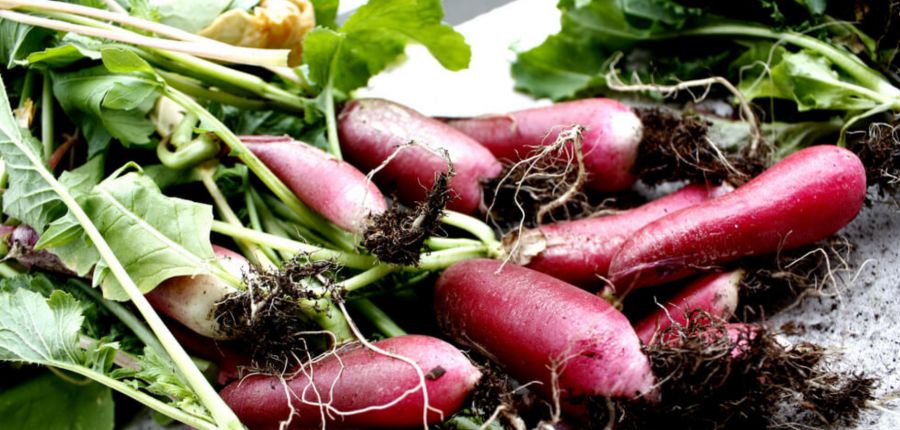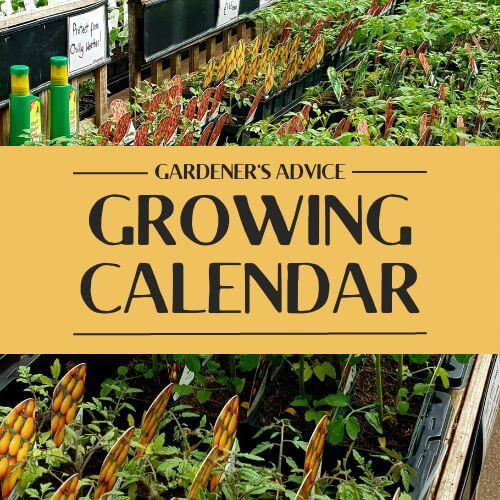Grow your own salad tea
Posted By: rocket veg Category: Growing Veg, Seasonal AdviceYou don’t need much space to grow a selection of salad vegetables which, with a bit of planning and regular sowing, will provide you with tasty crops from late spring until well into the autumn. A sunny spot with fertile, moisture-retaining soil is a prerequisite, so a small raised bed on your allotment, or corner in the garden should be fine. When sowing, be sure to follow the instructions on the seed packet when it comes to depth and spacing, as well as any other specific advice.
Salad crops to sow now
Radish: get off to a flying start by sowing radish, among the fastest germinating seed which will provide a crop of crisp radishes ready to eat four weeks from sowing. Sow a short row of radish every fortnight to ensure that you have a steady succession for picking when needed and while the radishes are still young, tender and crunchy. Radish is a great ‘catch crop’, using space available between slow-growing vegetables such as beetroot and peas.
Varieties to try: ‘French Breakfast’ – very reliable, long and cylindrical red radishes with a white tip. ‘Red Meat’ – mottled deep pink flesh with a mild and nutty flavour, good in stir fries.
Lettuce: best started in a small seed tray and planted out as soon as the seedlings are big enough to handle. Successive sowings will provide you with tasty lettuces whenever you need them.
There is a wide variety of lettuce seed, including the ever-popular ‘Webb’s’ Wonderful’ and ‘Little Gem’ as well as red-leaved ‘Oak Leaf’ and ‘Intered’.
Salad or spring onions: try sowing two contrasting varieties in adjacent rows, ‘White Lisbon’ and ‘Lilia’, the latter with delightful deep purple stems.
Beetroot: larger seed so easier to handle, and with a bit of care it is possible to space the seeds out when sowing which avoids having to thin the tiny plants out. Most varieties of beetroot will keep well in the ground when they reach maturity, but are best eaten young – the tiny red or orange globes gently boiled and then peeled. Larger beetroot can be peeled and grated raw to be added to coleslaw and other dishes.
Varieties to try: ‘Bolthardy’ – an excellent cropper. ‘Boldor’ – distinctive golden orange skin and bright orange flesh. ‘Cylindra’ – as the name suggests, cylindrical beetroot which are perfect for slicing.
Rocket: as for radish and lettuce, successive sowings will provide regular pickings when needed. Rocket is prone to attack from the flea beetle which makes small unsightly holes in the leaves, especially when the plants are young. Regular watering and covering the seedlings with fleece will deter the tiny beetles.
Salad leaves: lots of varieties to choose from, some more colourful and spicy than others – all adding interest to a meal. When harvesting, pick a few leaves from plants along the row, rather than taking a lot from one or two plants.
Hints and tips when growing salad crops
I generally cover rows of newly sown seed with horticultural fleece which helps retain warmth and moisture to aid germination, especially when cool winds blow. Slug alert! Tiny succulent salad leaves act as a magnet to molluscs so take the usual precautions. Water seedlings well in times of drought as some types of veg, such as beetroot, are prone to ‘bolting’.







